Guntamatic GmbH operates internationally producing high-tech biomass heating systems. From fully automatic log wood heating systems through to pellet heating, Guntamatic continually demonstrates itself to be the leader in innovation in its industry. The company has always used Fronius welding technology to ensure the high-quality production of their products. Since 2020, the Austrian family-run company has also put its trust in the Fronius TransSteel 4000 Pulse to improve overall manual welding efficiency in production.
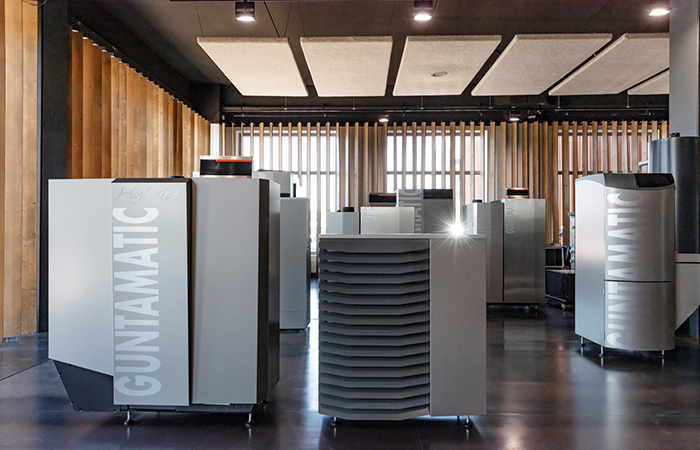
A true Austrian success story: The small family-run company Guntamatic from rural Peuerbach started trading in 1963 with the production of log wood boilers and has since become the international industry pioneer in biomass heating. Biomass technology really began to boom in the 1980s and Guntamatic began to expand and see its first competitors. In the 1990s, it was becoming clearer and clearer that biomass heating systems could be operated as a fully-fledged alternative to oil and gas heating systems since they were CO2-neutral.
Guntamatic’s hybrid heating systems combine the best of both worlds, the perfect combination of heat generation by means of an electric heat pump for heating water and biomass combustion. This means the system can constantly take advantage of stored prices for electricity and wood/pellets. Also, taking into account personal preferences, hybrid heating systems automatically switch between electric power and biomass combustion.
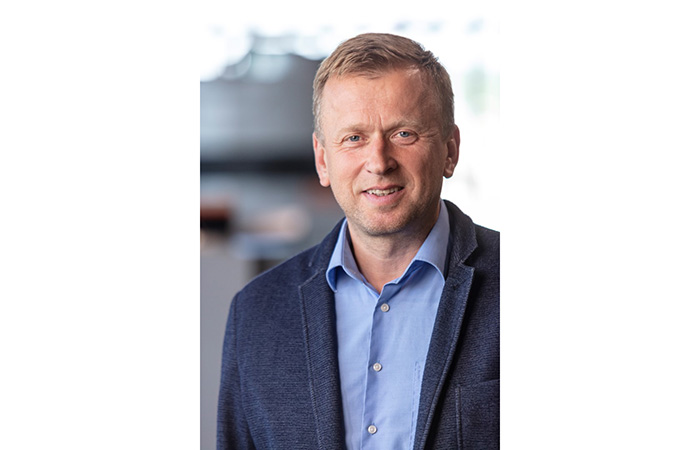
However, Guntamatic systems do not just set new standards in heating, but also in overall comfort. Heat generation is no longer the only way that Guntamatic succeeds in increasing comfort at home, atmospheric and elegantly-designed heating elements in the fireplace bring the combustion process, and the resulting cozy radiant heat, into the living room.
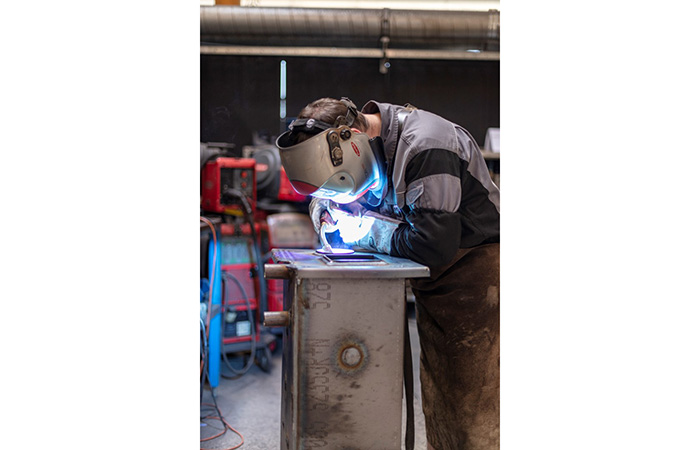
Sustainability, Cost-Effectiveness, and Efficiency
“With the rise of pellet heating systems, the industry has continued to develop strongly since the beginning of the 2000s,” explains Günther Huemer, Managing Director of Guntamatic GmbH. The SME, which, in the meantime, has grown to employ around 250 people, has continued to grow in line with industry trends, something that has also had an impact on production. “We have to remain efficient in all areas, while continuing to deliver the highest levels of quality. A high degree of automation, particularly in sheet metal forming, is thus required to continue to remain competitive at our headquarters against companies in low-wage countries.”
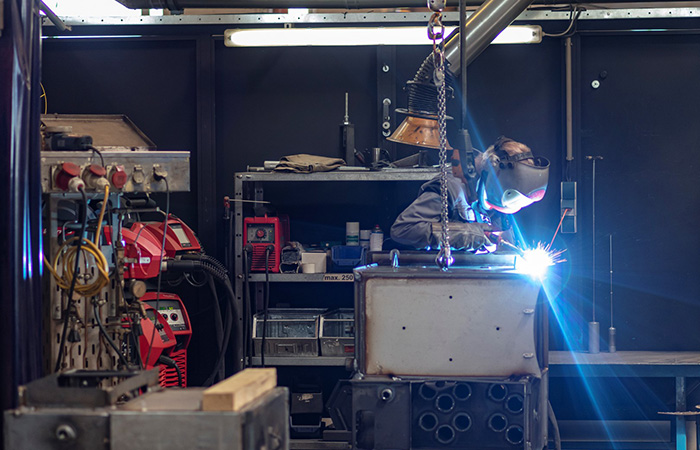
However, Guntamatic does not pursue cost-effectiveness at the expense of sustainability. “The production of our heating systems focuses on durability,” argues Huemer, “we try to produce sustainable, clean, and reliable products. Our ecological footprint is extremely important to us, and this sustainability, as well as quality, is something we also demand from our business partners. The long service life and quality of purchased products and raw goods is thus of utmost importance to us.”
In this respect, the company also relies on close and trusting relationships with its suppliers. “We almost never switch our business partners,” explains Huemer. “We place great importance on good, fast, and reliable support. As such, one of our partners is Fronius, which has guided us from the very beginning in the field of manual welding.”
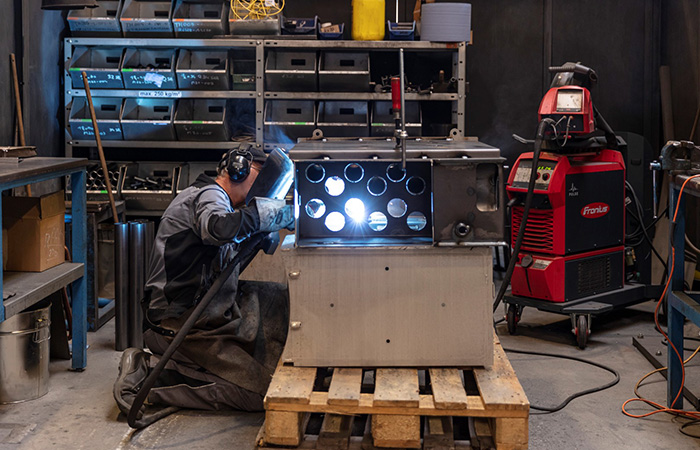
Production and Joining Technology
“Almost all of Guntamatic’s products are made in Peuerbach,” explains master metalworker Roland Fellinger, who is responsible for coordinating welding operations at Guntamatic, “the only things to be supplied to us are the sheets and raw materials. Processing, parts production, and assembly are almost entirely completed in-house. We try to avoid purchasing parts.” All components are manufactured using CNC punching machines and other automated high-tech machines before being handed over for joining. Welding boilers and their long seams are completed almost entirely by machine.
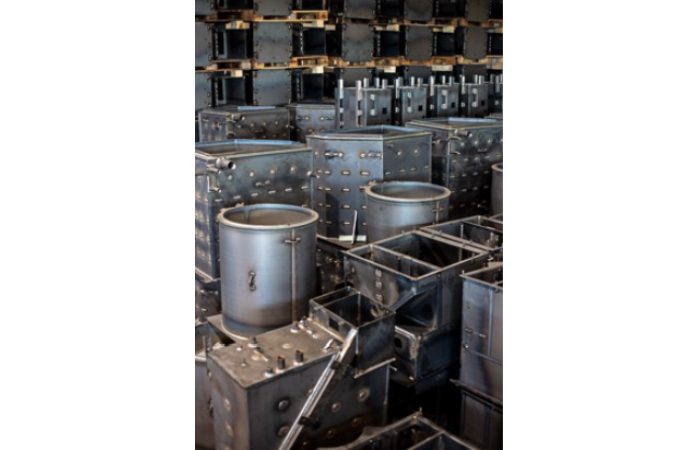
However, when it comes to the inner workings and tacking of the boiler, robotic welding is no longer the most efficient option due to the restricted component accessibility. Manual welding thus remains the method of choice, “here, we primarily add black and white connections, i.e. steel with stainless steel,” adds master metalworker Fellinger. “The box-shaped boilers have difficult corner joints that have to be constantly refinished by manual welders.”
“In addition, we are working with the complete range of sheet thicknesses. We predominantly switch between transition and spray arc, so the choice of materials make the conditions really difficult.” In the past, this meant high levels of refinishing were required.
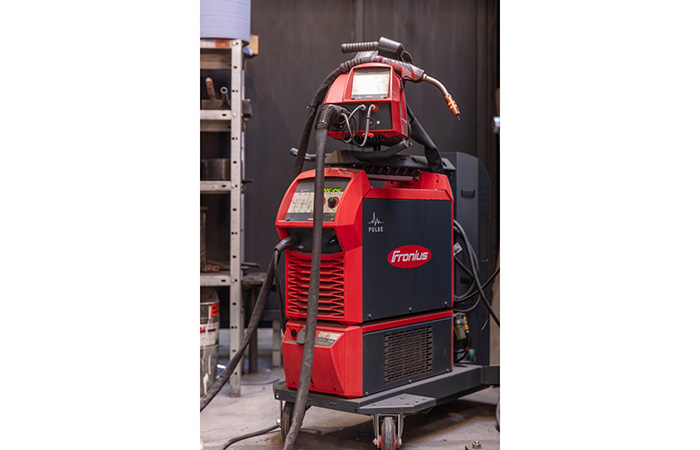
Guntamatic Modernizes the Manual Welding Sector
“As such, our main goal was to reduce the resulting refinishing costs,” confirms Fellinger. Indeed, from the very beginning, Guntamatic has been working exclusively with Fronius welding systems for manual welding, including the VarioSynergic (3500/4000), the TransPocket, and the MagicWave for TIG welding, but, to cope with the demands for making work easier and reducing costs, MIG/MAG pulse welding seemed the most up-to-date and effective solution.
“After Fronius launched the TransSteel Pulse series in 2020, we decided it was time to modernize,” explains Fellinger. “The pulse welding function enables us to work with significantly greater process stability, while at the same time substantially reducing welding spatter. Since then, we have integrated numerous TransSteel 4000 Pulse welding systems into our production. As a result, manual welding has become much cleaner, and we have been able to reduce the amount of reworking required.
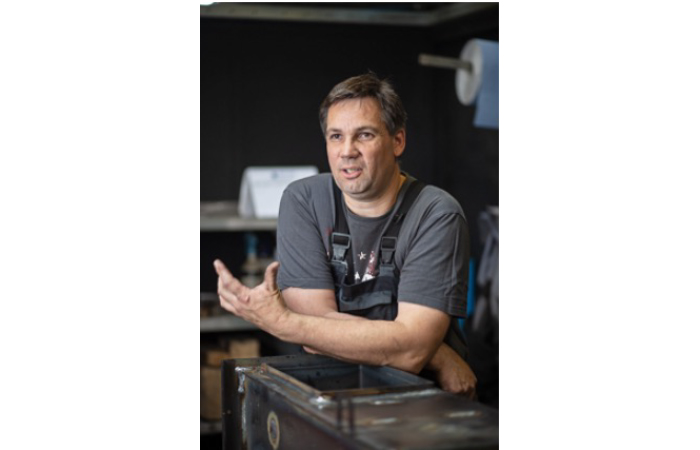
Furthermore, ease of use is something that is really important to us, and that’s something Fronius was able to deliver with the TransSteel 4000 Pulse. As a result, the welding system could be integrated and set up ready for use in just a few steps.”
Professional Support in Sales and Servicing
However, if welders still have questions about handling, system care, and maintenance, Fellinger is clear, “Fronius is a top company and delivers top quality. That means that good sales and servicing are always available to us, something that is particularly important to us with regards to our productivity, because this cooperation ensures quick decisions and short turnarounds.”
“We almost never switch business partners if we are happy with the partnership,” expands Managing Director Huemer. “And Fronius has been one of our suppliers from the very beginning. The Fronius brand stands for a level of quality that we need in the field of welding, because, when it comes to quality assurance, our main focus is on the welding technology, because the quality of this is reflected in the life cycle of our products.”
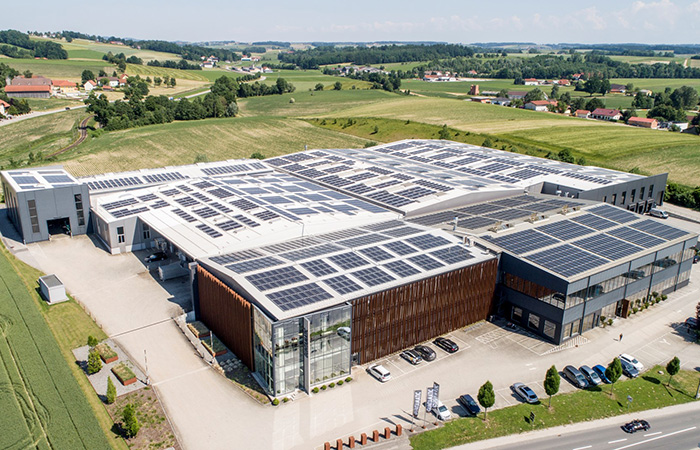
Fronius Also Stands for Sustainability at Guntamatic
Moving beyond welding technology, Fronius also supports Guntamatic in the area of sustainability. “In light of our corporate philosophy, we place great importance on improving sustainability in the use of energy at our production site. It’s about CO2-neutral production, and, naturally in this context, our attention once again fell on Fronius.”
“The question here was who belonged to the leading suppliers in the area of solar energy, and we are delighted that we are now able to operate our 20,000 m2 photovoltaic system with Fronius inverters.”










UK Enters ‘Golden Age of Nuclear’
Anybody know why it takes from 2025 to mid 2030's to build a factory-made SMR, by RR? Ten years... has there been no demonstrator either? Do RR...